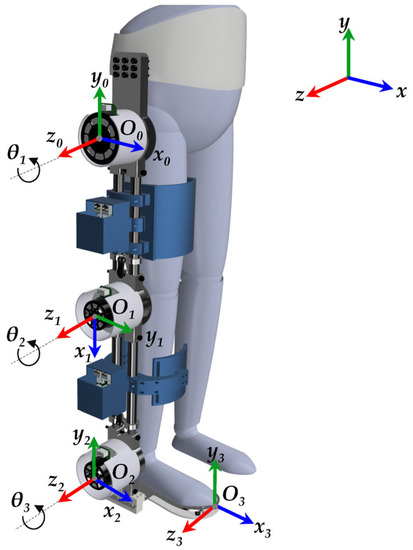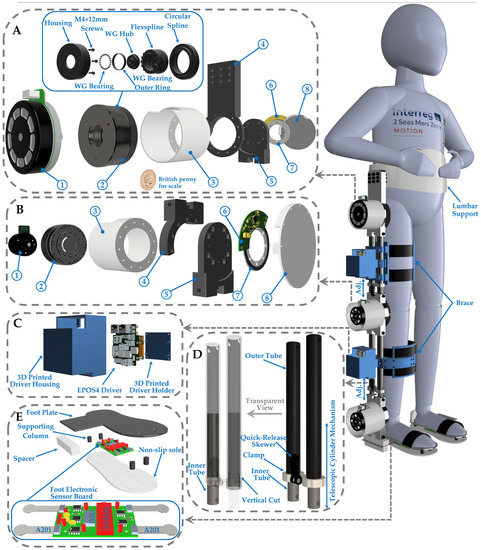According to records, 2.3 to 3.6 of every 1000 children are diagnosed with cerebral palsy yearly. Among all the cases, it is Spastic Cerebral palsy, which is the most common one. Making for 61% to 76% of the total case. For people wondering what is Cerebral Palsy(CP)? It is a special condition in children as an after-effect of abnormal development or physical damage in certain brain parts responsible for movement control. The onset of Cerebral Palsy can happen during pregnancy, just after birth, or when in the infant stage, while the brain is developing. Because of their condition, children with CP have their movements restained and lack a regular independent life compared to a healthy child. Offering steady help to these innocent lives, a research team has developed the first size-adjustable single-leg exoskeleton (SLE).
This external support system aims to help children with CP aged between 8 and 12. Before starting with their research part, the team did take a look into the available exoskeleton systems. They came up with limited brands offering lower-limb exoskeletons (LLEs), with a stark scarcity of SLEs, that one can adjust according to their needs. The researchers started assimilating the first size-adjustable single-leg exoskeleton to fill this gap. Also, they designed the particular according to Gross Motor Function Classification System (GMFCS), covering its levels between I to IV.
Why Size-Adjustable Single-Leg Exoskeleton?
When talking about the exoskeletons, there are mainly three subcategories for the population to look into, multi-joint exoskeletons, single-joint exoskeletons, and exoskeleton-plus-walker combinations. Each has its own pros and cons, which the researchers made their point to compare and contrast thoroughly. Moreover, the team compared exoskeletons for the single and both sides of the body, but the SLEs covering one side won the race.

Here’s how:
- SLEs offer more targeted assistance to the affected joint or leg, improving mobility (especially overall body balance and walking patterns).
- LLEs are heavier on the comparison chart, where SLEs appear to be lightweight. Thus making it even easy for children with CP to move around, participating in multiple activities.
- Moreover, SLEs are more cost-effective, discrete, and versatile, reducing social stigma. Thus making children with CP less socially conscious, which walking with a walker induces in general.
Overview Of The First Size-Adjustable Single-Leg Exoskeleton
The first size-adjustable single-leg exoskeleton comes with three adjustable joints, from the hip, moving downwards from the knee to the ankle of the child. The team also focused on keeping it as light as possible by incorporating durable aluminum tubes. Thus making it easy for the children to move around. Also, the exoskeleton comes as an adjustable output to help children between ages 8 to 12, with different body types, undergoing separate mobility issues, overcome their hurdles.
The team has infused a telescopic cylinder mechanism into the device to eliminate kinematic incompatibility and misalignment. This was done considering the various physical attributes of the children with CP. Also, realizing they would grow over time, the team introduced a vertical cut on the end of the outer tube with a clamp attached. Thus enabling easy adjustment at length.

As the first size-adjustable single-leg exoskeleton, the device comes with removable pads, inserts, adjustable buckles, and straps. There is also an emergency stop button, backed by locking mechanisms, and a non-slip sole, reducing the risk of falling because of unfamiliar movements by the child.
Ultimately, to help the child move around at a consistent pace, researchers incorporated a high-performance embedded controller comprising separate sensory, control, and mechanical features. Based on the efficiency scale, the team went with harmonic drive gears and brushless DC motors. They chose the EtherCAT communication protocol to enable high-frequency, responsive operation.
Reasons Size-Adjustable Single-Leg Exoskeleton Is A Winner Till Now
Given that the team made it a point to conduct in-depth research on all the pre-existing LLEs available in the market, it helped with steady product development. Also, they made sure that the present SLE is thoroughly customizable, helping children with their best usage. The best part about this single-legged program is that it has passed major evaluations and lets the child stand strong through all the odds.



